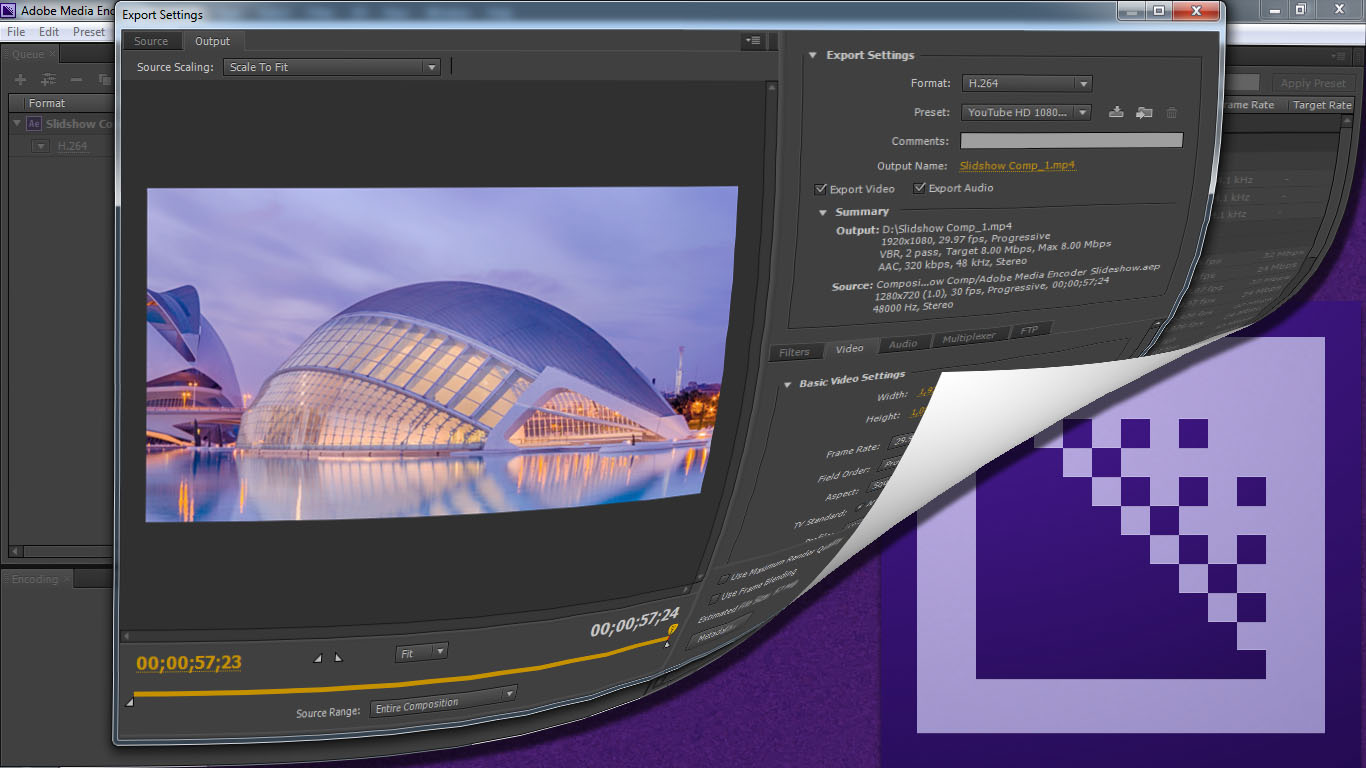

- #ADOBE MEDIA ENCODER CC OPTIMIZE RENDERING HOW TO#
- #ADOBE MEDIA ENCODER CC OPTIMIZE RENDERING ARCHIVE#
This "master" file is also a great file to archive for long-term backup, as it is far higher quality than the web version we will encode. This is the source video file we will use to convert to a smaller, web friendly H.264, as it tends to result in higher image quality than directly exporting to H.264. Anything that supports 10 bit and allows you to set 4:2:2 or higher color subsampling. Encode a "master" file using a high quality codec such as Apple ProRes, Avid DNxHD, GoPro Cineform, etc.While I'm showing these guidelines in Adobe Media Encoder CC 2015, these tips are are useful for any application that encodes H.264 (Compressor, Handbrake, Squeeze, etc). Although this is an extremely complex subject that used to be its own profession, known as a compressionist, I figured I would provide some guidelines for best results when exporting a file for web distribution. Now that you know your way around Adobe Media Encoder, check out our After Effects Kickstart course to start learning your away around After Effects from the ground up! And if you want to learn more about video codecs check out our ' Video Codecs for Motion Design' tutorial here on School of Motion.As an online editor, one of the most common questions I'm asked is, "how can I compress my film for web distribution, like YouTube and Vimeo?". If anyone on your team needs a video in a different format, you can simply duplicate the video in your Media Encoder Queue, adjust settings, and render a new video format. To render in Adobe Media Encoder simply click the green play button in the top right hand corner of the Queue dialog box.Ī really cool thing that I love about Media Encoder is that you can export a master copy from After Effects once. Once you've adjusted out all of your settings, you're ready to start the encoding process. Set your export options in the Export Setting dialog box.You can also get to the Export Settings box by doing the following steps.

If you want to learn more about video codecs check out our Video Codecs in Motion Graphics tutorial here on School of Motion. Note: Format is not the same as video wrapper.

Use the Format pop-up menu to choose the best video format option for your output.Make sure the items you want to render are in the Adobe Media Encoder Queue panel.You can find the 'Export Settings' window by selecting the colored text under 'Format' or 'Preset'. Your export settings box in Adobe Media Encoder is almost identical to the export settings box in Adobe Premiere Pro. You might run into issues if you have conflicting versions of After Effects and Media Encoder. Note: Be sure to keep Adobe Media Encoder updated to the latest Creative Cloud version. You can choose one or more files by double-clicking on an open area in the Queue panel.You can choose one or more files from the Add Source button.You can drag one or more items to the Queue from your desktop or media browser.However, If you are not already working in After Effects you can use one of the following three methods to send After Effects projects to the Adobe Media Encoder queue. STEP 2: LAUNCH MEDIA ENCODERĪdobe Media Encoder should automatically launch when you queue your project from After Effects. Option 1: Choose File > Export > Add to Media Encoder QueueĪlternatively you can add your composition to the Media Encoder queue with the keyboard shortcut CTRL+Alt+M (Windows) or CMD+Opt+M (Mac). Thankfully, there are a couple of ways to add your After Effects project to the queue. To send a project from After Effects over to Adobe Media Encoder you must add it to the AME Queue. Now that you know the outline, I'll break down each step in a little more detail below. Adjust your Render Settings via Presets or Export Settings.Media Encoder will Open, Your After Effects Composition will Appear in the Media Encoder Queue.In After Effects, Choose File > Export > Add to Media Encoder Queue.Using Adobe Media Encoder to render out an After Effects project is surprisingly easy.
#ADOBE MEDIA ENCODER CC OPTIMIZE RENDERING HOW TO#
How to Export from After Effects to Media Encoder This will allow you to keep working on your project instead of sitting around waiting for the render to complete, which means you'll need to find a new time to catch up on all those YouTube videos. AME (as the cool kids say) allows you to hand the rendering process off to another application, so you can keep working in After Effects while your compositions render in the background.

What is Adobe Media Encoder?Īdobe Media Encoder is a video rendering application that comes bundled with After Effects in the Creative Cloud. But how is this done? In the following article I'll show you how to render out projects from Adobe Media Encoder.


 0 kommentar(er)
0 kommentar(er)
